Information has emerged from the recent Nvidia leak that suggests a new Nintendo Switch could be in development that supports Nvidia’s framerate-boosting DLSS technology.
As NVN is the name of the graphics API used for the Nintendo Switch, there are three potential references to the Switch within the leaked code: "nvndlspp," "nvn_dlspp," and "nvn_dlss_backend.h".
Interestingly, the code also mentions 'NVN2' which suggests that we might get a second generation of the Switch after all. As TweakTown points out in its own coverage, Bloomberg reported back in September 2021 that there are developers creating games for a 4K Switch console that doesn't actually exist yet, giving additional weight to the existing rumors.
This isn't the first time that whispers have appeared regarding a team-up between Nvidia and Nintendo to bring Deep Learning Super Sampling to the Switch console , though some of these stretch back to the start of last year, around the time that rumors were flying around that a more powerful version of the Switch was in development.
What was assumed to be a 4K-ready Switch 2 or Switch Pro was eventually revealed as the Switch OLED , but it would seem that we shouldn't dismiss the idea of Nintendo releasing a more powerful version of the console entirely.
A trusted tech leaker on Twitter by the name @kopite7kimi has also weighed in, stating that the leaked Nvidia code also specifically mentions a T239 chip that will potentially feature within a more powerful version of the Switch console. We have yet to see this make an appearance, but further complexities are added when you note that the Switch OLED dock can support a native 4K resolution at 60FPS , something that the current Tegra X1+ chip inside the handheld simply isn't capable of.
Trusted or not, let's not get too excited. It's impossible to verify any of this information, and Nintendo is as tight-lipped as ever, so take it with a pinch of salt.
What is DLSS, and why is this a big deal?
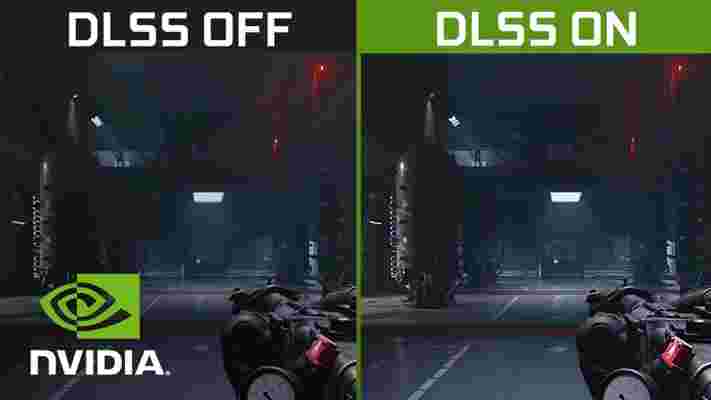
We've previously joked that DLSS is basically witchcraft, but that really doesn't do the tech enough justice. DLSS is an image upscaling technology that uses deep learning algorithms to upscale lower resolution images to a higher resolution. For demanding games on PC like Cyberpunk 2077 and God of War , having this feature can be a real blessing, allowing you to run these titles on a graphics card that would have struggled to meet your desired quality.
DLSS is available on any Nvidia RTX GPU , even as low as the RTX 2060 which was the entry-level card from the previous generation. Similarly, a new Nintendo Switch that uses the tech should hit higher frame rates which allows you to boose the resolution higher, opening up the possibility of 4K gameplay.
Still, there's a fair bit of work to smooth out to make this a reality. Orin , Nvidia's Tegra SoC (system on chip) based on the current Ampere architecture (the same generation as the RTX 3080 ) is one of the smallest systems Nvidia has that could viable operate inside a Switch console, but this has a power draw of 45W.
For context, the standard Switch has a power output between 10W - 15W. You can get the Orin to operate on just 5W, but that will likely come with its own issues, not to mention the fact that this SoC was originally designed to be used in the infotainment system of vehicles rather than powering gaming consoles. Still, this would only affect the Switch while in handheld mode, leaving the potential to scale up that power consumption when docked.
Does the Switch 2 actually need DLSS?
There's always going to be a section of the tech market that obsesses over high-end performance, and for those crowds - yes, DLSS is going to be a gamechanger. That said, Nintendo has happily trundled along with no real competitor because it hasn't had to chase the same performance expectations as the likes of Sony and Microsoft, so joining the 'big boys' is going to require some serious planning.
It sounds as though the Switch Pro (or Switch 2, depending on naming conventions) will serve the opposite audience of the Switch OLED. Where there was little to no benefit to playing on a docked OLED version of the console vs the standard, DLSS may only be made possible for the next generation of Switch if you're hooked up to a TV.
While Nintendo does offer the best of handheld and traditional console gaming within the original Switch, docked performance could certainly be improved, especially as we see iconic Nintendo genres like The Legend of Zelda start to grow ever larger and more demanding. For the likes of future open-world action games from the developer to play well, it might be necessary to include some of that DLSS-power from Nvidia to appease fans expectations.
Will it actually happen? There's enough fodder to fuel the rumor machine, but not enough to convince us that this is a guaranteed outcome, and if we do see a DLSS-powered Nintendo Switch, it might not make an appearance this year or even next thanks to how the chip shortage has devastated the gaming industry. We suggest you remain hopeful, but don't put all of your Yoshi eggs into this precarious basket.
Returnal devs are working on a new game - but its not Returnal 2
Developer Housemarque has confirmed its working on a new game - but it's not a sequel to the studio's critically acclaimed Returnal .
Speaking with journalists at the recent DICE Awards (via VentureBeat ), Housemarque's Managing Director Ilari Kuittinen hinted at Housemarque's next game, which will be a brand new IP rather than a sequel to Returnal. The game is still in the concept stage, according to Kuittinen, but sounds like it will see Housemarque returning to a more classic arcade game experience.
"We’re one of the very last dinosaurs making arcade games," Kuittinen said in response to a question about whether the studio has considered moving into the live service space - something the managing director didn't entirely rule out.
"Nex Machina, a few years ago, was very much a shoot-’em-up game in the style of the coin-ops from the ‘80s. That’s sort of a clue. But it’s interesting. We’ve been thinking about that. We had our stint working on multiplayer games, because a few years back it seemed like you needed to have some kind of multiplayer experience. We tried that, and we really didn’t do it as well. But it’s early days with us starting a new game, a new IP, concepting it out. We’ll see what comes with that."
2017's Nex Machina seems a world away from the polished PS5 exclusive Returnal, but both games boast Housemarque's own unique bullet hell experience and clear arcade elements. Returnal, though, utilized the PS5's technical capabilities to become a truly mesmerizing (but challenging) next-gen experience - something the studio didn't previously have at their disposal.
But this leap in technology also presented a challenge for the studio, in both retaining its identity and meeting expectations.
"We have maybe built a name for ourselves over the last 12-13 years for making these arcade-inspired games – Resogun, Nex Machina, Super Stardust HD and so on," Returnal's Game Director Harry Krueger told journalists. "Each of those had an incremental step up in terms of refinement and technological progress, but with Returnal, the step was so high it almost felt like a wall we needed to climb over.
"It was interesting for us, because when you’re given so many new possibilities, it’s important to remember who you are. It was valuable for us to always remember that we have these timeless gameplay values we’ve explored in our previous games. The unapologetic video game, arcade heritage."
Analysis:
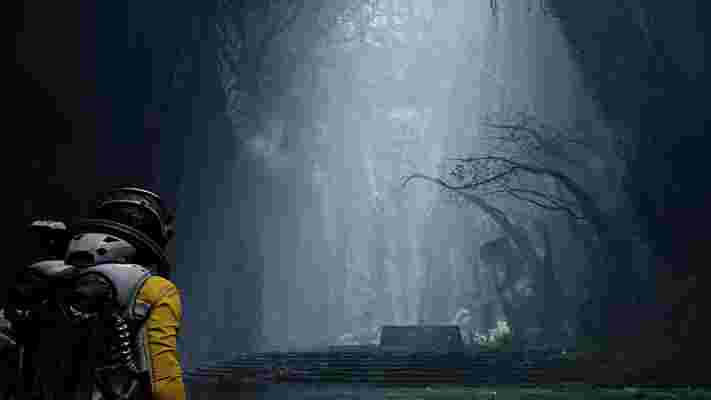
It sounds like we'll see Housemarque returning to its classic arcade roots with its next game, but that likely means that, if Returnal 2 is on the cards, we won't get our hands on it for a while yet.
Though whether we will ever see a sequel to Returnal remains to be seen. Housemarque hasn't confirmed plans for a new Returnal game, but the studio has hinted that the game could get DLC in the future. Perhaps DLC is all that's on the cards right now.
Returnal's ending (no spoilers) left us with more questions than answers, so the game seems primed for another installation. It could be those questions are answered with DLC, a new game or left unanswered to haunt us - let's hope the latter is not the case.
Either way, we're excited to see what Housemarque has in the works, especially with the power of Sony behind it. Even if another Returnal isn't on the way, we have high hopes for the studio.
Not played Returnal yet? Check out the best deals in your region below:
DJI Mini 3 Pro review
Two-minute review
The tiny and lightweight DJI Mini 3 Pro takes DJI's popular Mini drone series to new heights. The original DJI Mavic Mini arrived in 2019, and was followed in 2020 by the Mini 2, which upped the video resolution from 2.7K to 4K alongside other improvements; but it's the Mini Pro 3 that really brings the 'wow' factor to the sub-250g Mini series.
What’s most impressive about the Mini 3 Pro is that DJI has managed to include a tri-directional obstacle avoidance system inside such a small drone – but that's far from the only improvement over its predecessor.
The new drone's sensor is bigger – it's now a 1/1.3-inch CMOS chip; its lens's maximum aperture has been increased to a bright f/1.7; its video capabilities have been vastly improved; and the camera can be rotated 90 degrees, enabling you to capture stills and video in both landscape and portrait format.
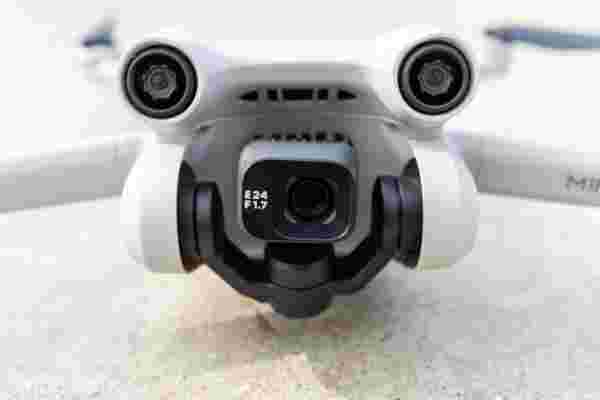
The list of improvements goes on, justifying that coveted ‘Pro’ moniker. In a nutshell, what you get with the Mini 3 Pro is many of the features and capabilities of higher-spec drones like the DJI Mavic Air 2, in a machine that crucially remains within the sub-250g weight category, which means it doesn't need to be registered in many regions. This is an impressive feat that has so far only been accomplished by the Autel Evo Nano, which we're in the process of reviewing.
These welcome new features, along with the new DJI RC Smart Controller that's available in the priciest of this drone's three kits, make the Mini 3 Pro a tempting proposition for aerial content creators. One fairly sizable downside, though, is the large leap in price from the DJI Mini 2.
This is to be expected when you consider all of the new features, but a drone that was once affordable enough to appeal to beginners is now priced closer to the DJI Air 2S , a drone that has a 1-inch sensor and is currently top of our list of the best drones you can buy. It's a tough choice between the two, but the DJI Mini 3 Pro is an excellent option for anyone whose priority is portability, and/or a compact drone that slots into their wider camera kit.
DJI Mini 3 Pro release date and price
You can buy the DJI Mini 3 Pro now in three configurations from the DJI Store and authorized retailers. The most basic option is the Mini Pro 3 with no controller, which costs $669 / £639 / AU$989. Naturally, this option is aimed at users who already own a compatible controller.
The second, and what will likely be the most popular bundle, is the standard kit ($759 / £709 / AU$1,119), which includes a DJI RC-N1 controller. If you want the new DJI RC Smart Controller, though, you'll need to go for the third and most expensive bundle, which costs $909 / £859 / €829.
All three DJI Mini 3 Pro bundles are significantly more expensive than the DJI Mini 2, which launched for $449 / £419 / AU$749 in November 2020.
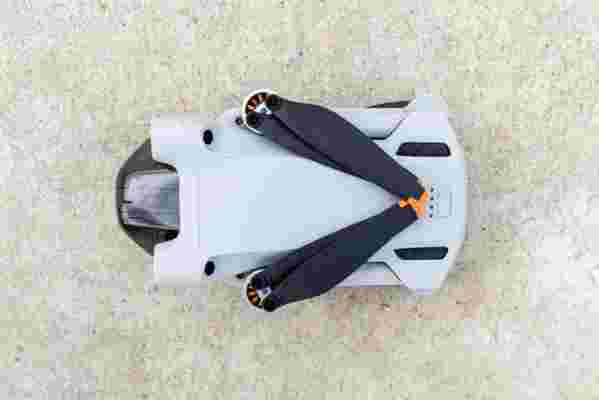
All of the kits include an Intelligent Flight Battery, two sets of propellers, a screwdriver, a gimbal guard, and a USB-C cable for charging and data transfer. The standard kit also comes with cables to connect the controller to your smartphone, though these naturally aren't included in the other two bundles.
As always, a Fly More Kit is available, and offers excellent value for money when compared to the individual prices of the included accessories. This includes two Intelligent Flight Batteries, a three-battery Charging Hub, two sets of propellers, and a Shoulder Bag. The Fly More Kit costs $189 / £159 / AU$259, and additional accessories are available separately.
In the US and Australia, you can also buy a DJI Mini 3 Pro Fly More Kit Plus for $249 / AU$359, which includes the Intelligent Flight Battery Plus for a longer, 47-minute flight time.
DJI Mini 3 Pro: Design and controller
With its folding design and light-gray finish, the Mini 3 Pro has the signature DJI Mavic family looks. But whereas the DJI Mini 2 has sleek, Lamborghini Countach-esque lines like other Mavic models, the Mini 3 Pro is decidedly more rounded.
The inclusion of the obstacle sensors and rounded gimbal mounts further add to this more curvaceous look, while additional design tweaks include propellor arms that have been made more aerodynamic, and propellors that are larger than those used by the Mini 2 to help to increase flight times.
The gimbal attaches to the drone on both sides of the airframe, which helps support the camera and its larger 1/1.3-inch sensor. Handily, this camera can be rotated 90 degrees to shoot stills and video in both portrait and landscape format. It's a feature that has no doubt been included for social media content creation, thanks to the popularity of TikTok and Instagram Stories, but it’s an extremely useful feature for photographers of all kinds.
In terms of controllers, the standard kit comes with the DJI RC-N1, which is the same controller that you get with the Mavic 3, Air 2S, Mavic Air 2 and Mini 2. This controller features a telescopic phone holder and no screen of any kind.
A significant, but pricier, upgrade on the RC-N1 is the new DJI RC Smart Controller that we used for this review. It offers a large, clear 5.5-inch touchscreen with a 700-nit brightness, and weighs in at 390g. This is only around 5g more than the combination of an RC-N1 Controller and a smartphone, and it offers a faster set-up, as you only need to screw in the thumbsticks in order to start flying.
DJI Mini 3 Pro: Features and flight
When it comes to flight, the Mini 3 Pro offers three modes – Cine, Normal and Sport – which is a DJI staple across most consumer and prosumer models.
Cine, which offers a max speed of 13.4mph, provides a slower flight speed with less sensitive controls for smoother cinematic video footage. The Normal mode, with a 22.3mph top speed, is the most commonly-used mode, while Sport is the fastest mode, with the drone able to reach 35.7mph, although collision avoidance is turned off.
Despite its small size and lightweight build, the Mini 3 Pro has a wind speed resistance of just under 24mph, and performs reasonably well in these conditions, particularly when you're flying in the more powerful Sport mode. Overall, we found the controls to be responsive and the connection between the drone and controller was reliable.
With every new DJI drone in an existing series there seems to be an improvement in battery and flight performance, and the Mini 3 Pro is no exception. The new 2,453mAh Intelligent Flight Battery weighs just 80.5g, and is claimed to provide a flight time of up to 34 minutes.
In reality, when you factor in the charge needed for Return to Home, varying temperatures and wind, your flights are more realistically in the 20-25 minute region, but that's still a decent bump up from the stamina of the original DJI Mavic Mini.
An Intelligent Flight Battery Plus, featuring a 3,850mAh capacity, is also available for the Mini 3 Pro. This increases the official flight time to 47 minutes, but takes the Mini 3 Pro's weight above 250g, moving it into the next weight category in most regions. It's also important to note that this larger-capacity battery won’t be available in some regions, including the EU.
The most important area of improvement has to be the addition of tri-directional obstacle avoidance, which uses wide-angle forward-, backward- and downward-facing sensors. This, alongside Advanced Pilot Assistance Systems 4.0 (APAS 4.0), provides obstacle avoidance that can be turned off when necessary. You can also set it to stop the drone, or autonomously fly around an obstacle when detected. This is a huge leap for the Mini series, and opens the door to some handy autonomous features.
QuickShots are automated flight patterns that let you shoot dynamic video with ease and, on the Mini 3 Pro, they're now available on a Mini-series drone for the first time. Even better, there's also now subject-tracking thanks to the FocusTrack Suite, which gives you options for tracking moving subjects, autonomously flying around static subjects, or keeping a subject in the frame while you manually fly the drone. All of these modes work well, and are very welcome additions.
DJI Mini 3 Pro: Image and video quality
Thanks to the new 12.1MP 1/1.3-inch sensor, which is capable of capturing 48MP photos, image quality is incredibly good for such a small and lightweight drone.
There is a small loss of sharpness towards the edges of the frame when shooting stills, which is typical of most consumer drones, and lateral chromatic aberrations can be visible along high-contrast subject edges, but this isn’t a major issue.
The Mini 3 Pro's ISO handling is, without a doubt, excellent. There's virtually no additional noise visible in raw files in any of the settings above ISO 100, all the way up to the maximum ISO 6400. Natural color reproduction is also maintained, which means you can confidently shoot at any ISO setting.
The Mini 3 Pro's camera uses dual native ISO capturing technology, and the move has certainly paid off. When this ISO handling is combined with the fast f/1.7 aperture, the Mini 3 Pro is a low-light powerhouse.
In stills mode, you’re able to capture raw files and JPEGs in two resolutions. While the Mini 3 is advertised as having a 50MP resolution, ‘standard’ raw files are 12.1MP. To get larger files you have to shoot in the 48MP mode, which capture files at that resolution. However, when compared to the standard 12.1MP files, images captured in 48MP mode appears less sharp, although this could simply be an illusion because detail naturally looks sharper in smaller images.
48MP shooting is undoubtedly a welcome feature that extends the possibilities of the camera, although when you're shooting in this mode you're unable to use AEB (Auto Exposure Bracketing), Burst or Timed Shot mode. When you use these, the resolution is set to the standard 12.1MP, but you can use Adobe’s Super Resolution in Lightroom and Adobe Camera Raw to increase the size of these raw files if you need to.
Overall, video captured by the Mini 3 Pro is excellent. The videos captured for our tests were shot without ND (neutral density) filters, because these were unavailable at the time. This means the 4K footage is a little choppy, due to the fast shutter speeds required to balance exposure against the fast f/1.7 fixed aperture.
Detail and sharpness across the frame are, however, excellent when shooting video, and the use of ND filters will produce fluid footage when shot at the optimum shutter speed for the frame rate of the video being captured. An ND filter set is available separately from DJI, and this is an essential buy if you intend to shoot video.
Video can be captured at three resolutions; 4K (at up to 60p), 2.7K (at up to 60p) and FHD at up to 120p. The latter provides slow-motion video when shot at 120fps. The maximum video bitrate is 150Mbps, and with Normal and D-Cinelike color profiles available, the Mini 3 Pro is suitable for both amateur and professional video capture.
There's also a digital zoom option that provides 2x zoom at 4K resolution, 3x zoom at 2.7K and 4x zoom at FHD. This must be used sparingly because of the loss of quality, although FHD ultimately provides the best results up to 2x zoom.
Should I buy the DJI Mini 3 Pro?
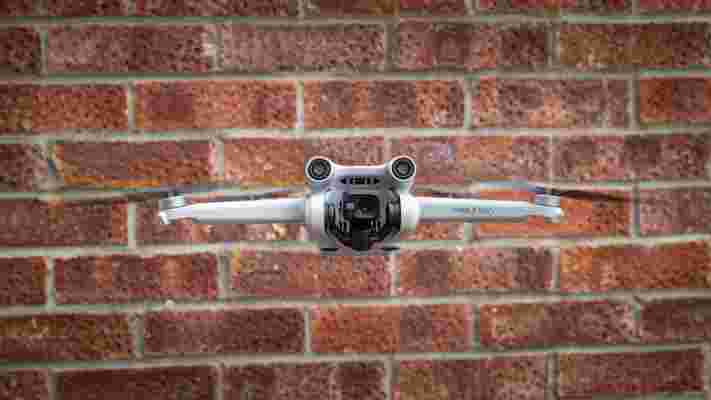
Buy it if...
Don't buy it if...







